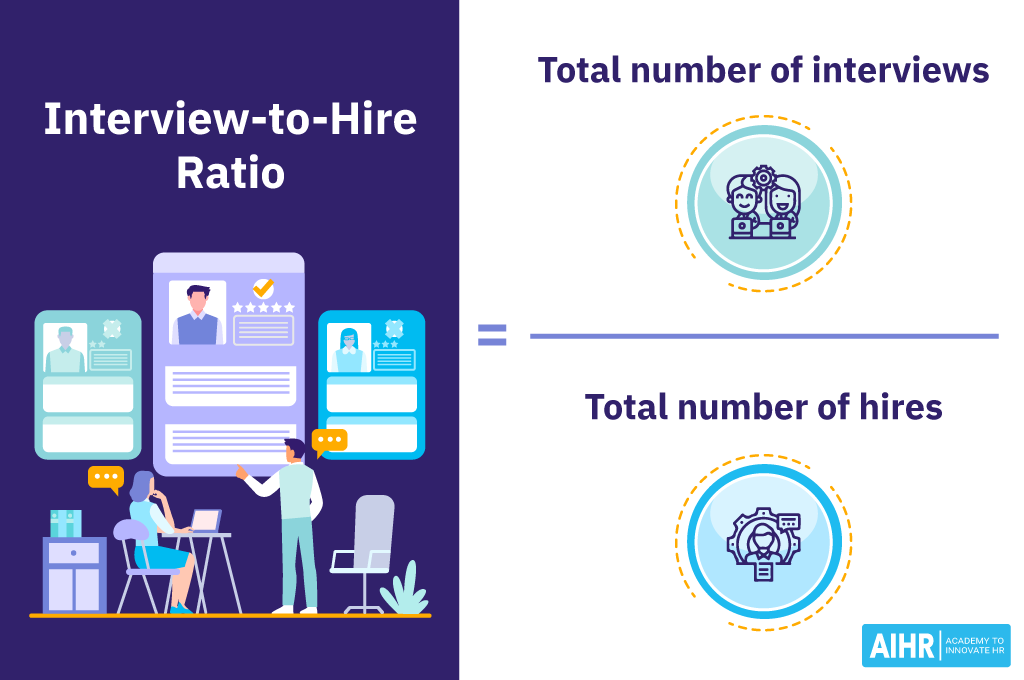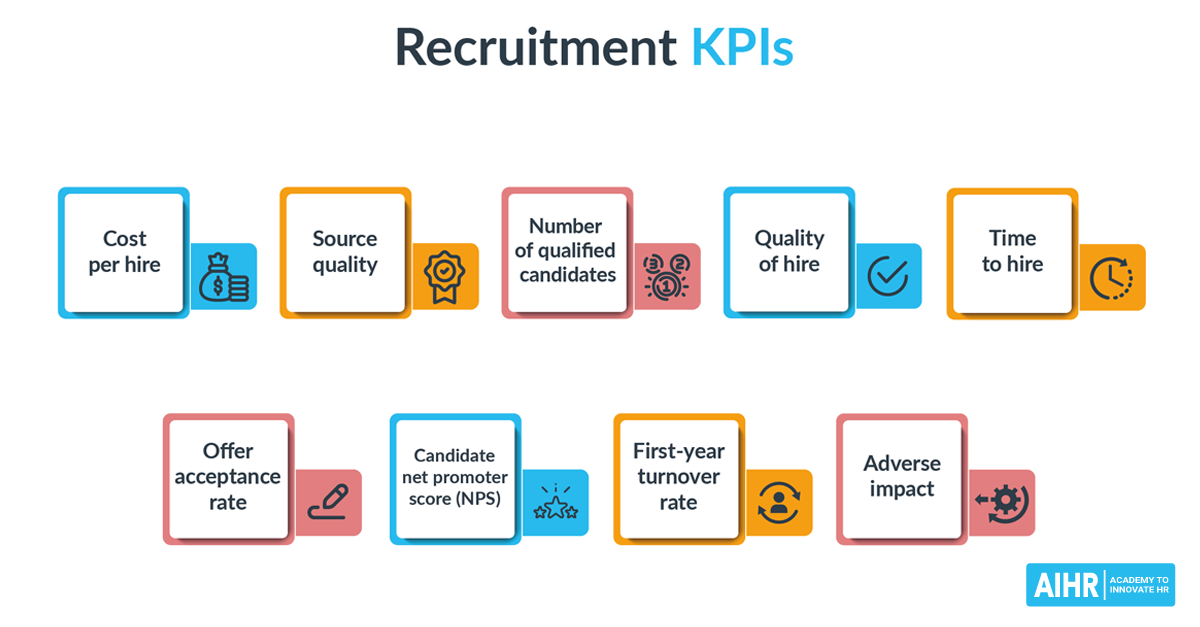Interview To Hire Ratio
What is an interview-to-hire-ratio?
The interview-to-hire ratio is a recruitment metric used to measure the efficiency and effectiveness of the hiring process. It represents the number of interviews conducted relative to the number of hires made within a specific timeframe.
This ratio provides insight into how selective the hiring process is and can help organizations understand how many interviews are typically needed to make a successful hire.
What is a good interview-to-hire ratio?
A good interview-to-hire ratio can vary significantly based on the industry, specific roles, the company’s hiring practices, and the overall conditions of the labor market. More specialized or senior positions may require interviewing several candidates, potentially pushing the ratio higher when finding the right match with the necessary skills and fit. On the other hand, for more general or entry-level roles, the ratio might be lower due to a larger pool of suitable candidates.
A study by the National Association of Colleges and Employers (NACE) found that the average interview-to-offer ratio was approximately 2:1. This means that for every 100 candidates interviewed, 50 received job offers. Additionally, the acceptance rate of these offers was about 3:2, indicating that, of the 50 offers made, 30 were accepted by candidates.
Factors affecting the interview-to-hire ratio
Several factors can influence the interview-to-hire ratio, including:
- Role complexity: The complexity and seniority of the position can greatly impact the ratio. Complex and senior roles often have higher ratios due to more thorough vetting processes, while simpler roles have lower ones.
- Hiring strategies: The nature of a company’s hiring practices, including the rigor of its screening processes (e.g., use of preliminary tests), can affect how many candidates are interviewed before a hire is made.
- Effectiveness of the recruitment channels: The effectiveness of the sourcing channels (e.g., job boards, social media) can also impact the ratio. Some channels might bring in more qualified candidates than others, impacting how many interviews are needed per hire.
- Company reputation and employer branding: A strong employer brand can attract higher-quality candidates, improving the interview-to-hire ratio. Conversely, a poor reputation may lead to a lower-quality applicant pool.
- Labor market conditions: Job market conditions can significantly impact the ratio. In a candidate-driven market with more jobs than qualified candidates, the ratio might increase as companies need to interview more candidates to find suitable hires.
How to calculate interview-to-hire ratio
To calculate this ratio, simply divide the total number of interviews conducted by the total number of hires made. Here is a detailed step-by-step process:
- Step 1: Count interviews: Count the total number of interviews conducted for a specific period or for particular job openings.
- Step 2: Count hires: Count how many candidates were hired from those interviews during the same period.
- Step 3: Divide: Divide the number of interviews by the number of hires.
You can use this simple formula:
Interview to hire ratio = Total number of interviews / Total number of hires

Calculation example
Suppose a company conducted 100 interviews and ended up hiring 10 people from those interviews. The interview-to-hire ratio would be calculated as follows:
Ratio = 100 / 10 = 10
This would give you a ratio of 10:1, meaning that for every 10 interviews the company conducted, one hire was made.
What the results mean
- A higher ratio indicates that more interviews are needed to make a hire, which could suggest the need for better screening processes or that the position is difficult to fill.
- A lower ratio suggests a more efficient hiring process, indicating fewer interviews are needed to secure a hire.
6 tips for HR: How to improve interview-to-hire ratio
Improving the interview-to-hire ratio is crucial for making the hiring process more efficient and cost-effective. Here are several practical tips to improve this key metric:
- Refine job descriptions: Ensure job descriptions accurately reflect the role and its requirements to attract qualified candidates and minimize the volume of unqualified applicants.
- Use pre-screening processes: Implement strong pre-screening measures, such as tailored questionnaires or skill assessments. These tools can help filter out candidates who do not meet essential criteria early in the process, reducing the number of interviews.
- Improve sourcing techniques: Diversify and optimize the sourcing channels. For example, tapping into professional networks, industry-specific job boards, and employee referral programs can yield more qualified candidates.
- Implement a structured interview process: Standardize interview questions and evaluation criteria to maintain consistency and fairness in the selection process, leading to better hiring decisions.
- Establish a feedback loop: Regularly communicate with candidates, hiring managers, and interviewers. Feedback can give insights into areas that need improving in the interview process, candidate experience, and overall hiring strategy.
- Track other recruiting metrics: Monitor additional metrics such as time to fill, time to hire, and offer acceptance rate to identify areas for improvement and optimize the overall recruitment process.
Other recruiting metrics to track
Here are some other recruitment metrics you can track alongside the interview-to-hire ratio that will give you valuable insights into the efficiency of a company’s hiring process:
- Time to fill: Time to fill calculates the period from the start of the recruitment process to when an offer is accepted by the chosen candidate.
- Time to hire: Time to hire encompasses the entire recruitment process, from posting the job vacancy to the candidate’s first day on the job.
- Quality of hire: This recruitment metric represents how much a new hire contributes to your company’s long-term success.
- Cost per hire: Cost per hire quantifies the expenses incurred throughout the hiring process, including recruitment advertising, agency fees, background checks, and onboarding costs.
- Application completion rate: This metric assesses the percentage of job applications completed and submitted by candidates compared to the total number of applicants started.
- Source of hire: Source of hire identifies the channels through which successful candidates were initially attracted to the job opportunity, such as job boards, employee referrals, career fairs, or social media platforms.
- Offer acceptance rate: The offer acceptance rate measures the proportion of job offers extended by the organization and accepted by candidates.
- New hire turnover: This metric calculates the number of new hires who leave a job within their first year or another period defined by the organization.







